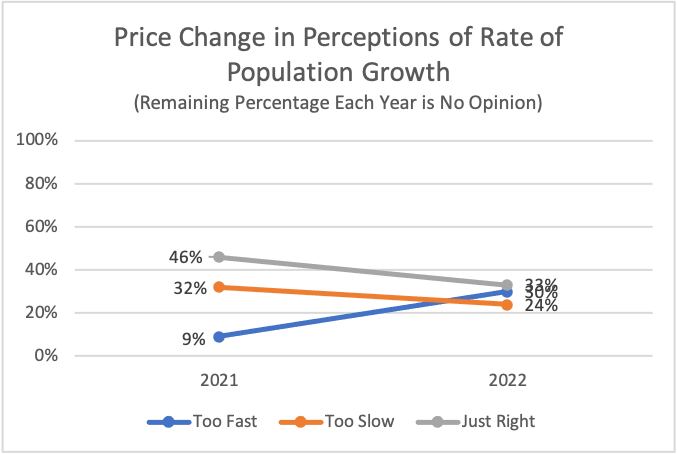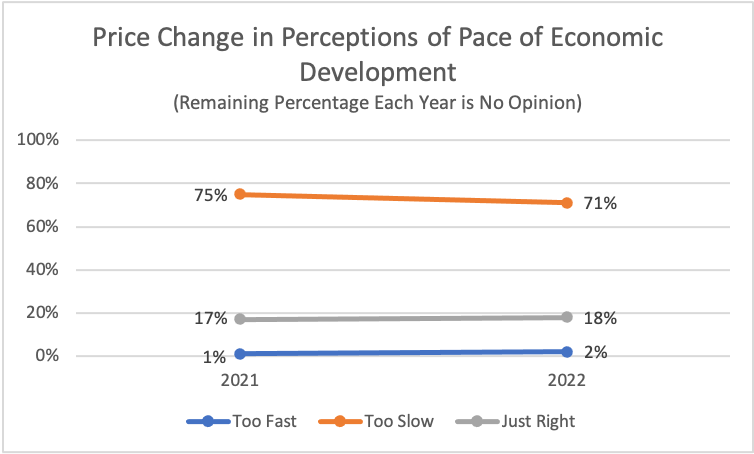Price Wellbeing Survey Findings 2022
By Dr. Courtney Flint and Team
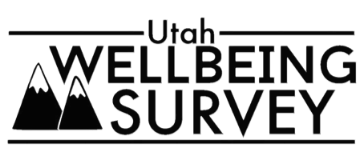
courtney.flint@usu.edu
435-797-8635
Summary
Price City is one of 33 cities participating in the Utah Wellbeing Survey Project in 2022. This project is designed to assess the wellbeing and local perspectives of city residents and to provide information to city leaders to inform their general planning process.
We are grateful to all participants who took the survey and to our city partners who helped to make this possible. Additionally, we are grateful to the Utah League of Cities and Towns and USU Extension for their financial support.
What is in this report?
This report describes findings from the 2022 Price survey and some comparative information with other project cities. Feedback from city leaders, planners, and residents is welcome.
How was the survey conducted?
Starting in March of 2022, Price City advertised the survey via email lists, a press release, social media, and on the city website. All city residents age 18+ were encouraged to take the online Qualtrics survey.
How many people responded?
- 261 viable surveys were recorded in this 2022 survey effort with 84.3% complete responses.
- The 2021 Price survey had 230 responses. Past reports are available on the Utah Wellbeing Project website.
- The adult population of Price was estimated at 5,948, based on the 2016-2020 American Community Survey by the U.S. Census. The 261 survey responses in 2022 represent 4.4% of the adult population and have a conservative margin of error of 5.93%.
Key Findings
Overall Personal Wellbeing and Community Wellbeing in Price were below average among the 33 study cities. Overall Personal Wellbeing in Price increased between 2021 and 2022, while Community Wellbeing remained nearly the same.
Wellbeing, domain ratings, and domain importance varied by demographic characteristics with age being particularly influential (those age 60+ were higher than other ages on many variables).
Highest Rated Wellbeing Domains:
- Connection with Nature
- Safety and Security
- Local Environmental Quality
- Education
Most Important Wellbeing Domains:
- Mental Health
- Safety and Security
- Living Standards
- Leisure Time
Red Zone Domain: (High Importance, Lower Quality)
- Living Standards
- Leisure Time
Perceptions that residents take action and feelings of community connection were lower in in Price than in most other study communities.
The majority of respondents felt the Pace of Economic Development in Price was too slow, while respondents were more divided on the Population Growth.
Top concerns for the future of Price were:
- Opportunities for Youth (89% Moderate or Major Concern)
- Water Supply (86% Moderate or Major Concern)
- Substance Abuse (83% Moderate or Major Concern)
- Affordable Housing (82% Moderate or Major Concern)
Positive social climate with smaller, rural feel, sense of safety, peace and quiet, abundant recreation, location, and access to nature and natural beauty.
Key Wellbeing Issues and Resource Areas
In addition to providing partner cities with the opportunity to take part in surveys, the Utah Wellbeing Project has worked to provide curated resources for community leaders and citizens that aim to improve specific aspects of wellbeing. These Wellbeing Resources can be found on the Utah Wellbeing Project Website, along with other useful tools and information.
Based on results of the 2022 Utah Wellbeing Project Surveys in Price City, key wellbeing issues include: Living Standards, Leisure Time, Water Supply, Substance Abuse, and Opportunities for Youth. Below you will find links to specific wellbeing resource areas we believe may be used to target some of these issues.
Survey Respondent Characteristics
Table 1
| Full Time Residents of Price | 97.3% |
| Part Time Residents of Price | 2.7% |
| Length of Residency — Range | 0.25- 72 years |
| Length of Residency — Average | 26.3 years |
| Length of Residency — Median | 24.5 years |
| Length of Residence 5 years or less | 17.2% |
Demographic characteristics of the survey respondents were compared below with U.S. Census information from the 2016-2020 American Community Survey. As the table shows, 2022 survey respondents were not fully representative of Price. People who are female, age 40-49, have at least a 4-year college degree, have children in the household, are employed, and those with household incomes ranging from $75,000 to $149,999 were particularly overrepresented. People age 70+, who are Hispanic/Latino, and those with incomes under $25,000 were particularly underrepresented. Not all respondents provided demographic information. Weighting was not used in any of the analysis for the findings presented below.
Table 2
Demographic Characteristics of Survey Respondents and U.S. Census Data for Price
| Demographic Characteristics | Price Wellbeing Survey | American Community Survey 2016-2020 Estimates |
|
|---|---|---|---|
| Online 2021 230 Respondents |
Online 2022 261 Respondents |
||
| Age 18-29 | 20.0% | 16.8% | 22.4% |
| Age 30-39 | 25.3% | 22.7% | 16.5% |
| Age 40-49 | 22.6% | 27.3% | 17.1% |
| Age 50-59 | 13.7% | 13.6% | 15.6% |
| Age 60-69 | 14.2% | 14.5% | 11.9% |
| Age 70 or over | 4.2% | 5.0% | 16.5% |
| Adult Female | 69.5% | 70.9% | 54.0% |
| Adult Male | 30.5% | 28.2% | 46.0% |
| Adult non-conforming or non-binary |
NA | 0.9% | NA |
| No college degree | 58.2% | 59.1% | 83.9% |
| College degree (4-year) | 41.8% | 40.9% | 16.1% |
| Median household income | NA | NA | $42,500 |
| Income under $25,000 | 13.3% | 7.8% | 32.2% |
| Income $25,000 to $49,999 | 19.0% | 19.8% | 24.8% |
| Income $50,000 to $74,999 | 18.0% | 18.9% | 19.5% |
| Income $75,000 to $99,999 | 23.8% | 19.8% | 9.5% |
| Income $100,000 to $149,999 | 18.5% | 23.5% | 8.9% |
| Income $150,000 or over | 7.4% | 10.1% | 5.1% |
| Church of Jesus Christ of Latter-day Saints | 38.5% | 37.0% | NA |
| Other religion | 35.8% | 35.6% | NA |
| Agnostic/Atheist/No religious preference | 25.7% | 27.3% | NA |
| Hispanic/Latino | 7.4% | 6.0% | 16.6% |
| White | 96.2% | 95.3% | 89.4% |
| Nonwhite | 3.8% | 4.7% | 10.6% |
| Married | 72.5% | 74.5% | 48.1% |
| Children under 18 in household | 50.0% | 50.2% | 34.2% |
| Employed | 73.2% | 73.1% | 52.9% |
| Out of work and looking for work | 1.1% | 1.8% | 4.2% |
| Other | 25.7% | 25.1% | 42.7% |
| Own home/Owner occupied | 73.2% | 74.1% | 64.1% |
| Rent home/Renter occupied/Other | 26.8% | 25.9% | 35.9% |
Overall Personal Wellbeing and Overall Wellbeing in Price
Survey participants were asked about their overall personal wellbeing and overall community wellbeing in Price. These wellbeing indicators were both measured on a 5-point scale from very poor (1) to excellent (5). The average personal wellbeing score in Price was 3.83 with 71% of respondents indicating their wellbeing at a 4 or 5 on the 5-point scale. The average score for community wellbeing in Price was 3.15 with 35% of respondents indicating city wellbeing at a 4 or 5 on the 5-point scale.
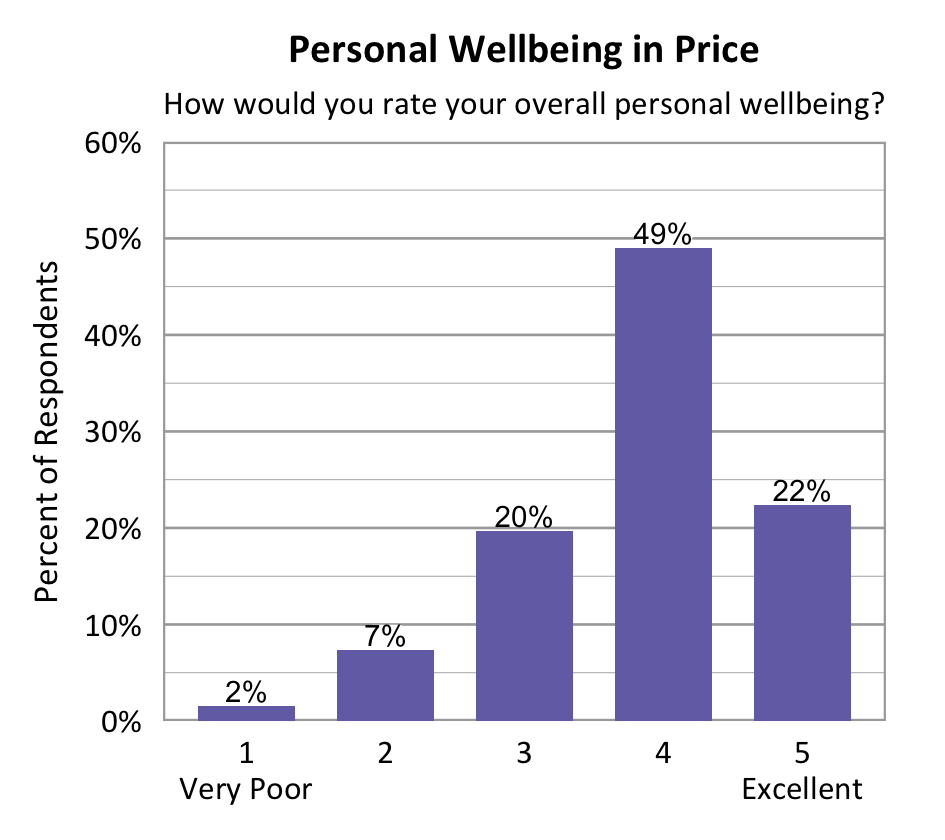
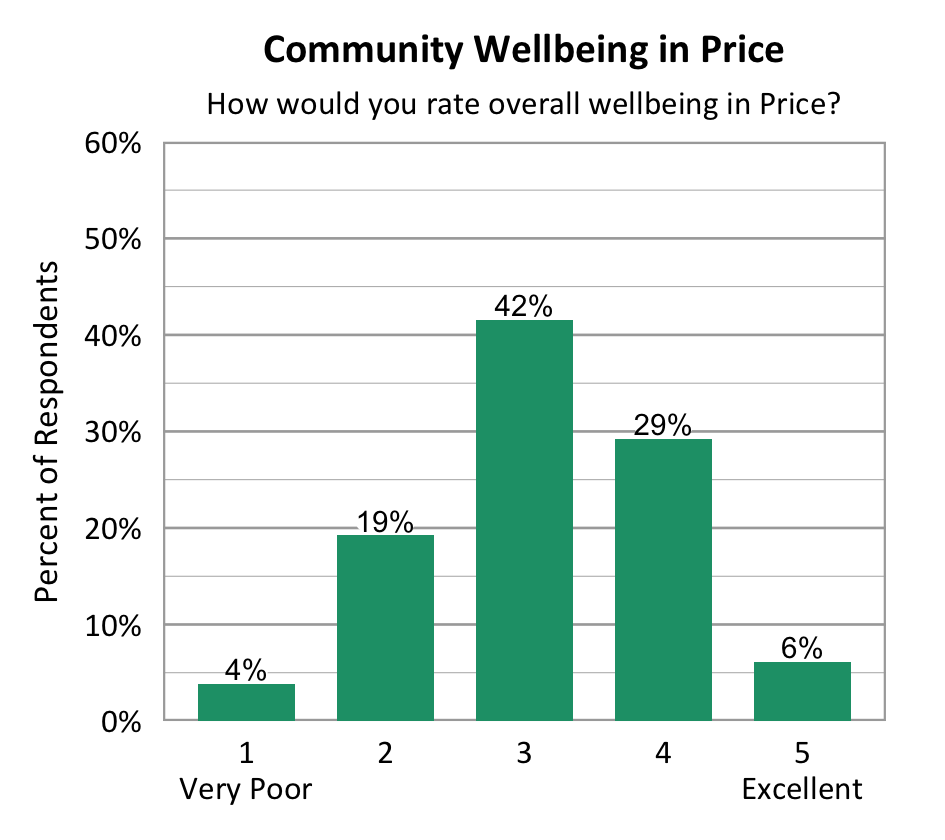
Comparing survey data from Price over the years as shown in the information below, we can see that the average personal wellbeing score increased and the community wellbeing score remained nearly the same. Note that the number of respondents differed between years and there is no tracking of individuals from one year to the next.
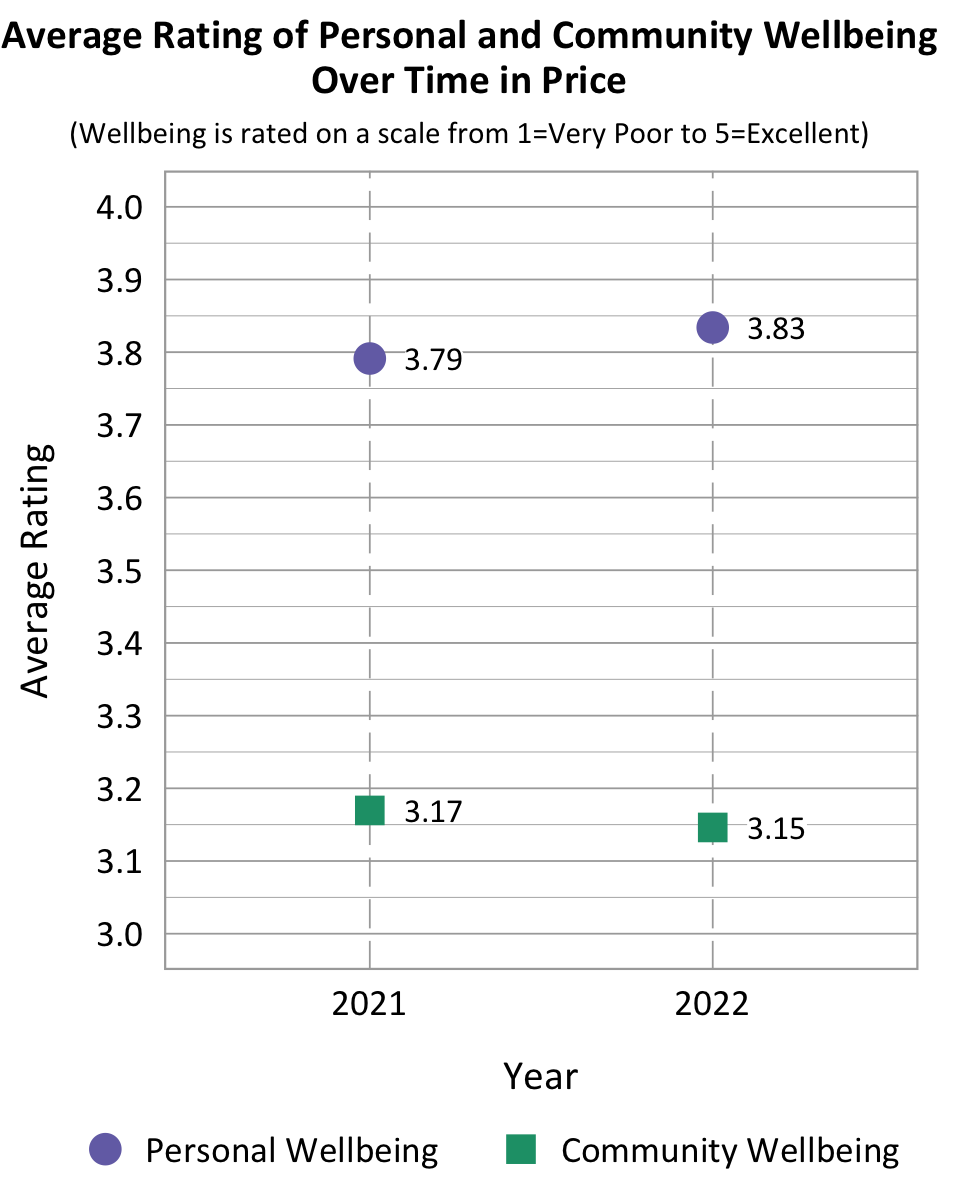
Comparing Wellbeing Across Utah Cities
The Utah League of Cities and Towns classifies Price as a Rural Hub/Resort Community (and we have combined these with the Traditional Rural Communities). Some cities may fit within more than one cluster.
Within the Rural city cluster, Price fell below the cluster average in terms of the average overall personal wellbeing and community wellbeing scores. Price was statistically significantly higher than Moab, but not significantly different from any other city in the cluster in terms of overall personal wellbeing. In terms of community wellbeing, Price was significantly lower than Helper, Bluff, Beaver, Ephraim, and Nephi. Margins of error are particularly high for Delta, Helper, Midvale, and Santaquin due to low survey response.
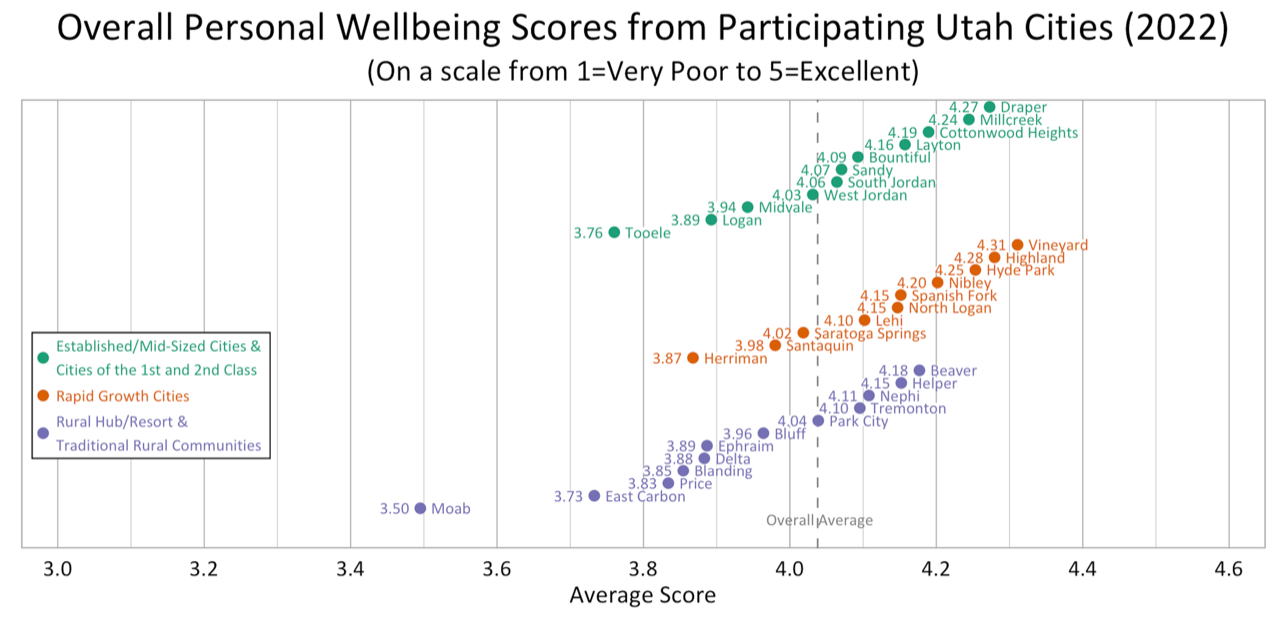
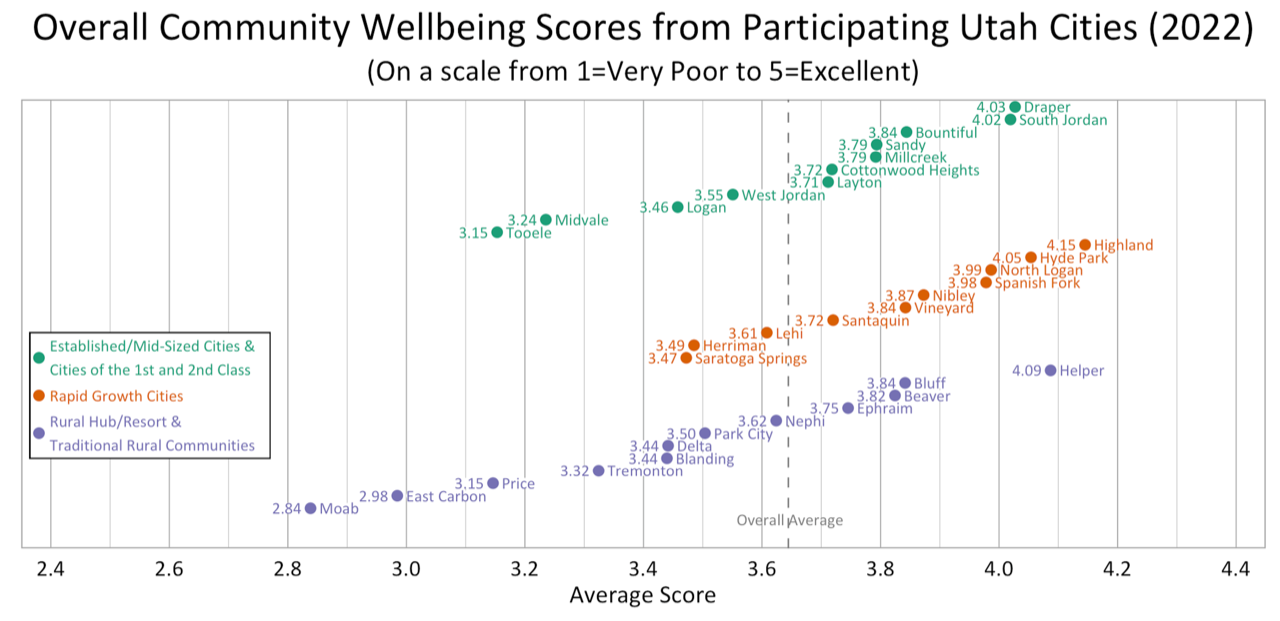
Wellbeing Domains in Price
According to national and international entities that track wellbeing, there are a number of common dimensions or domains of wellbeing. In this survey, respondents rated ten domains on a 5-point scale from poor to excellent, suggesting how their wellbeing was doing in each area. They were also asked to indicate the importance of each domain to their overall personal wellbeing on a 5-point scale from not at all important to very important. The top three highest rated wellbeing domains for respondents in Price were Connection with Nature (61%), Safety and Security (58%), and Local Environmental Quality (56%). The three most important wellbeing domains were Mental Health (96%), Safety and Security (93%), and Living Standards (93%).
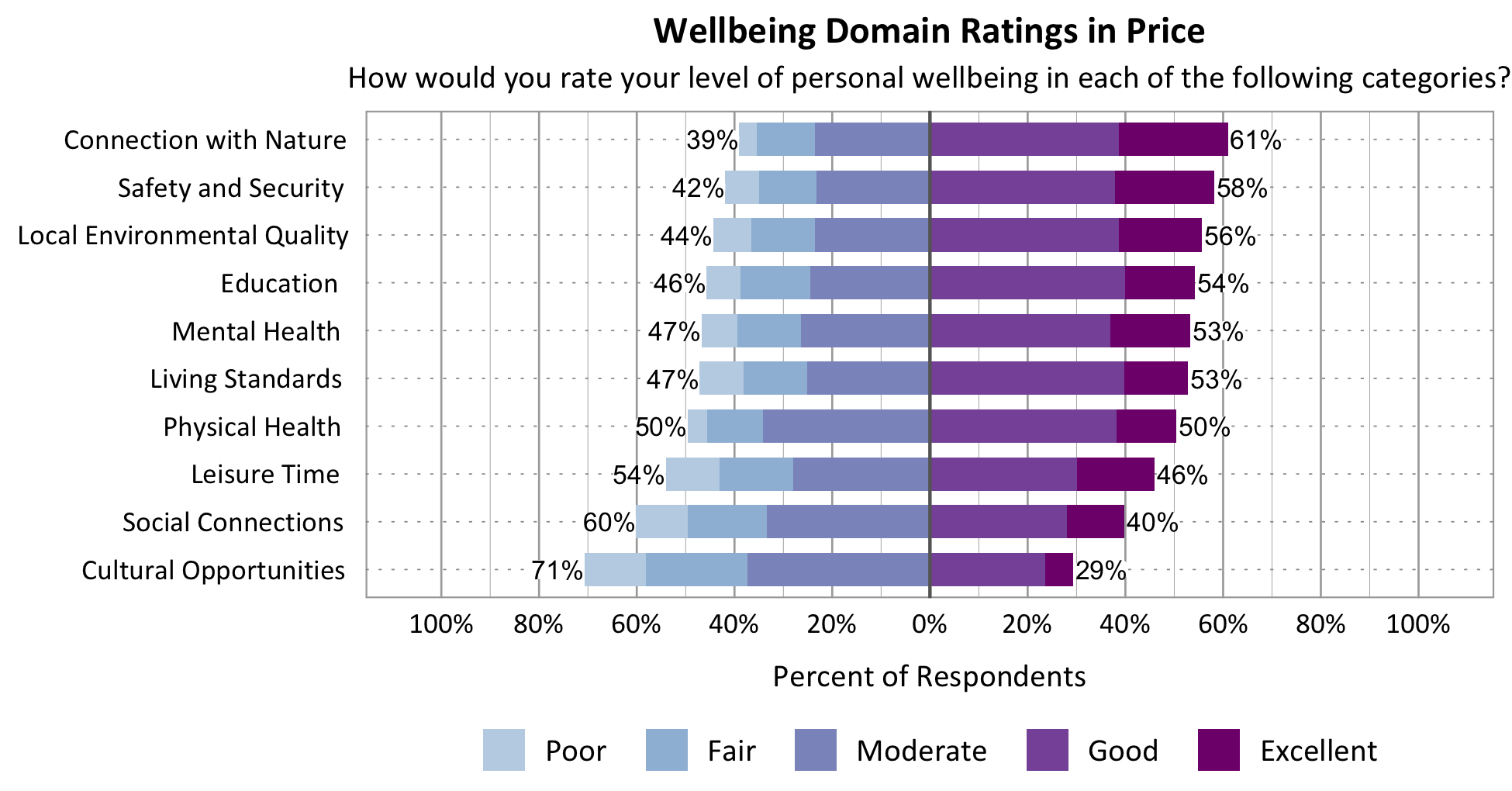
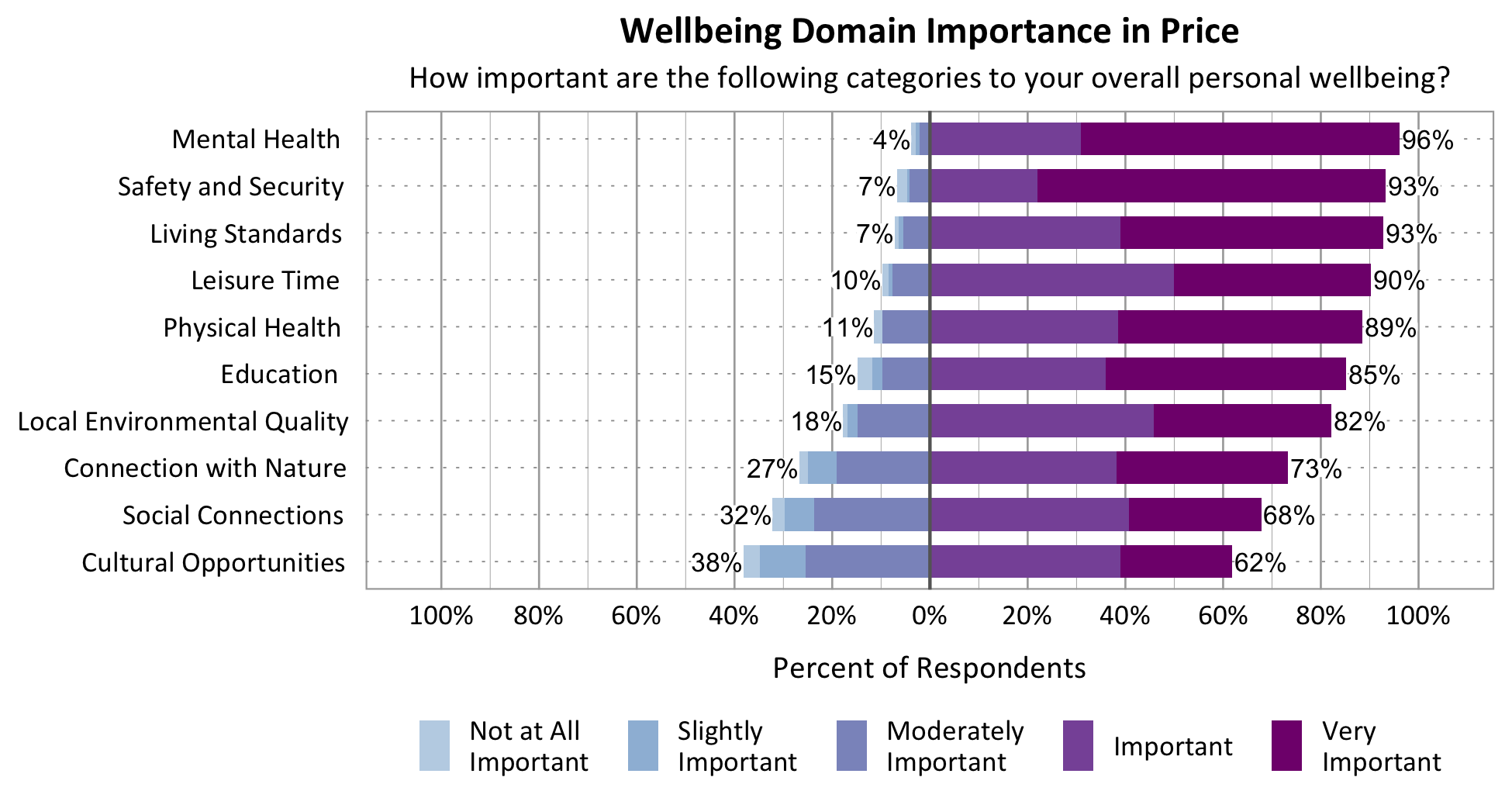
Wellbeing Matrix for Price
The graph below illustrates the relationship between the average rating and the average importance of wellbeing domains for survey respondents from Price. Education, Mental Health, Physical Health, and Safety and Security were highly important and rated above average among the domains. Living Standards and Leisure Time fell in the “red zone” of higher importance, but lower ratings.
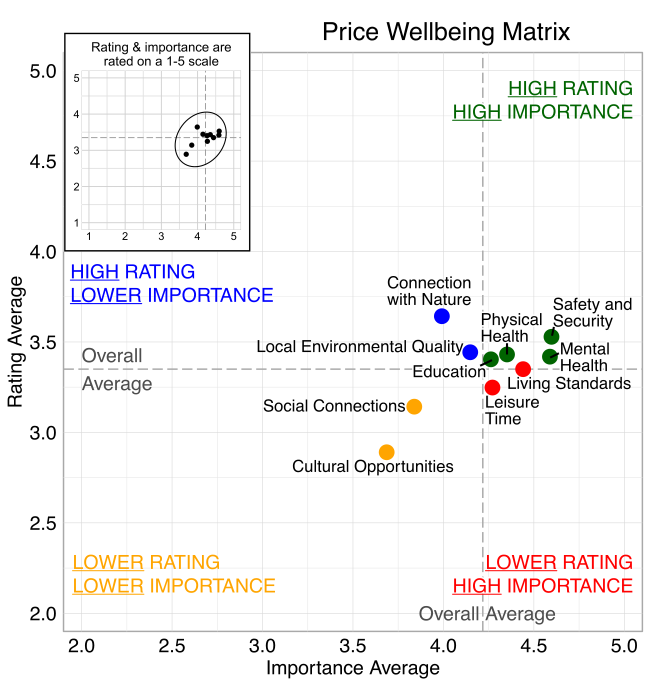
Wellbeing Domains Over Time in Price
The graphs below show how the domains were rated over the years by Price residents. The number of respondents changed over time.
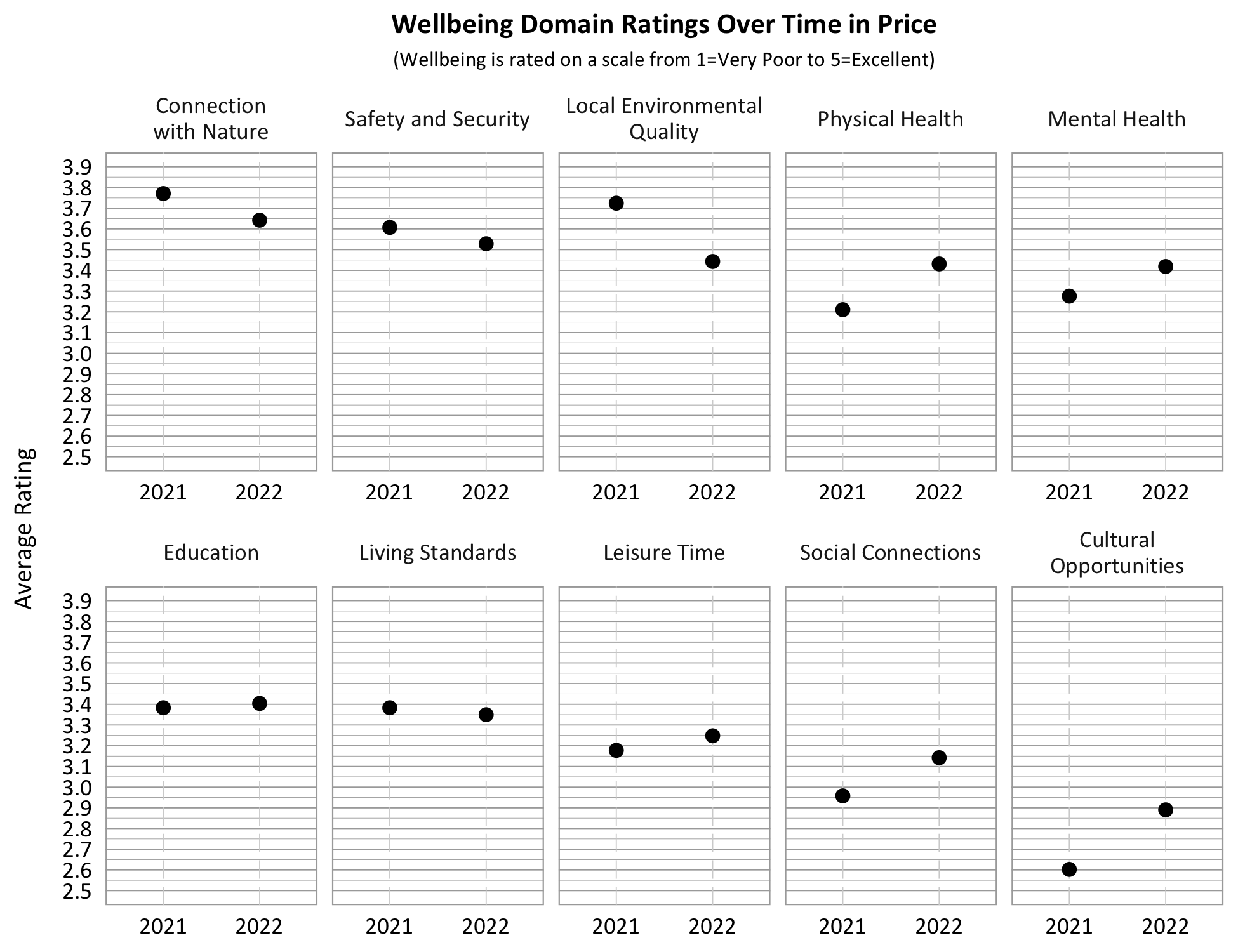
How are Demographic Characteristics Related to Wellbeing?
The demographic variables for age, gender, college degree, religion, income, and length of residence were found to have varying relationships among Price respondents as shown in the table below based on a generalized linear model with unweighted data. The +/- sign indicates whether the wellbeing score in the specific demographic group was significantly higher or lower than the reference group in each demographic variable (p<.05).
Table 3
Relationship Between Demographic Characteristics and Wellbeing Domains in Price
| Domains Rated | Demographic Variables | |||||
|---|---|---|---|---|---|---|
| Age 60+ | Female | College Degree | Latter-day Saint | Highest Income ($150,000+) |
Resident 5 Years or Less | |
| Wellbeing Ratings | ||||||
| Overall Personal Wellbeing | + vs 18-39 |
+ | ||||
| Wellbeing in Price | + vs 18-39 |
|||||
| Connection with Nature | + vs 18-39 |
- vs Other |
+ vs Under $75,000 |
|||
| Cultural Opportunities | + vs 18-39 |
|||||
| Education | + vs 18-39 |
+ |
+ vs A/A/NRP |
|||
| Leisure Time | + vs 18-39 |
|||||
| Living Standards | + |
+ | ||||
| Local Environmental Quality | + vs 18-39 |
|||||
| Mental Health | + vs 18-39 |
+ vs Under $75,000- $99,999 |
||||
| Physical Health | + vs Under $75,000 |
|||||
| Safety & Security | + vs 18-39 |
+ | ||||
| Social Connections | + vs 18-39 |
|||||
| Age 60+ | Female | College Degree | Latter-day Saint | Highest Income ($150,000+) |
Resident 5 Years or Less | |
| Domains | Domain Importance | |||||
| Connection with Nature | + vs 18-39 |
+ | - vs A/A/NRP |
+ |
||
| Cultural Opportunities | ||||||
| Education | + | |||||
| Leisure Time | ||||||
| Living Standards | ||||||
| Local Environmental Quality | + | |||||
| Mental Health | + vs 18-39 |
|
+ | |||
| Physical Health | + |
+ | ||||
| Safety and Security | ||||||
| Social Connections | + | |||||
Community Action and Connection in Price
Survey participants were asked about community actions and community connection in Price. Both questions were scored on a 5-point scale from not at all (1) to a great deal (5). When asked about the degree to which people take action together in response to local problems or opportunities in Price, the average score was 3.00. When asked about the degree they feel connected to their community, the average score was 2.93.
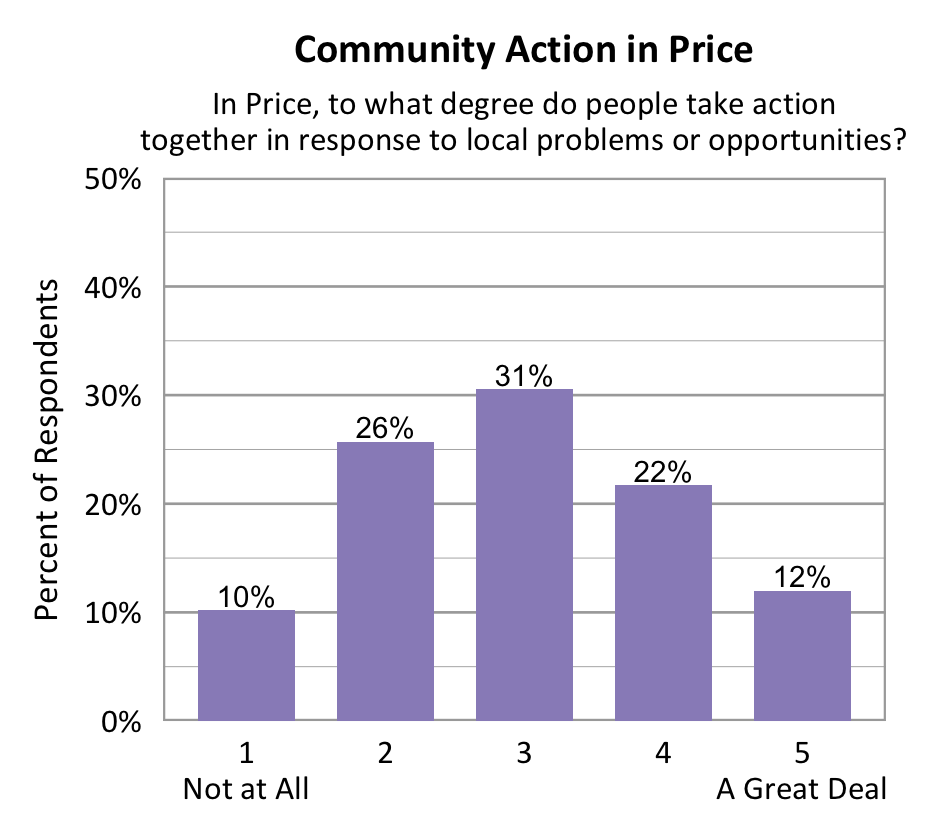
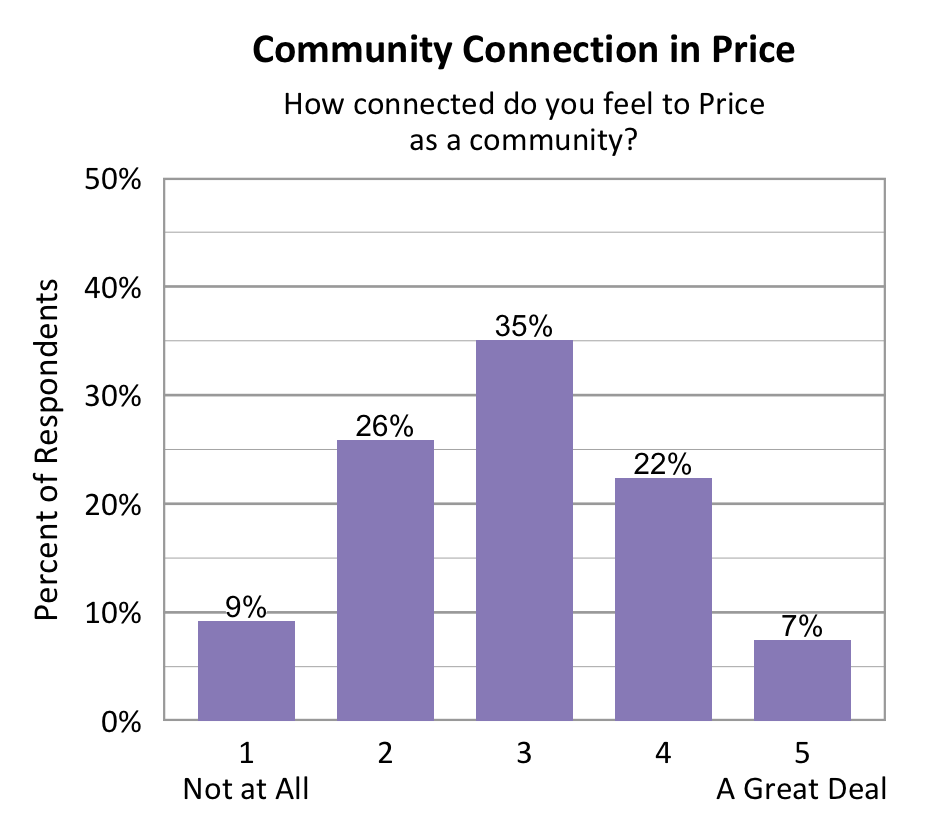
Latter-day Saints reported higher levels of community connection than those from other religions. Respondents who are female reported higher perceptions of local action than those who are male or gender non-conforming or non-binary. Respondents age 60+ reported higher perceptions of local action than those age 18-39. This was based on a generalized linear model with unweighted data (p < 0.05).
Table 4
Demographic Characteristics and Community Questions
| Community Questions | Age 60+ | Female | College Degree | Latter-day Saint | Highest Income ($150,000+) |
Resident 5 Years or Less |
|---|---|---|---|---|---|---|
| Do people in Price take action? | + vs 18-39 |
+ |
||||
| Do you feel connected to your community? | + vs Other |
A significant, positive relationship was found between individuals’ community connection and overall personal wellbeing.
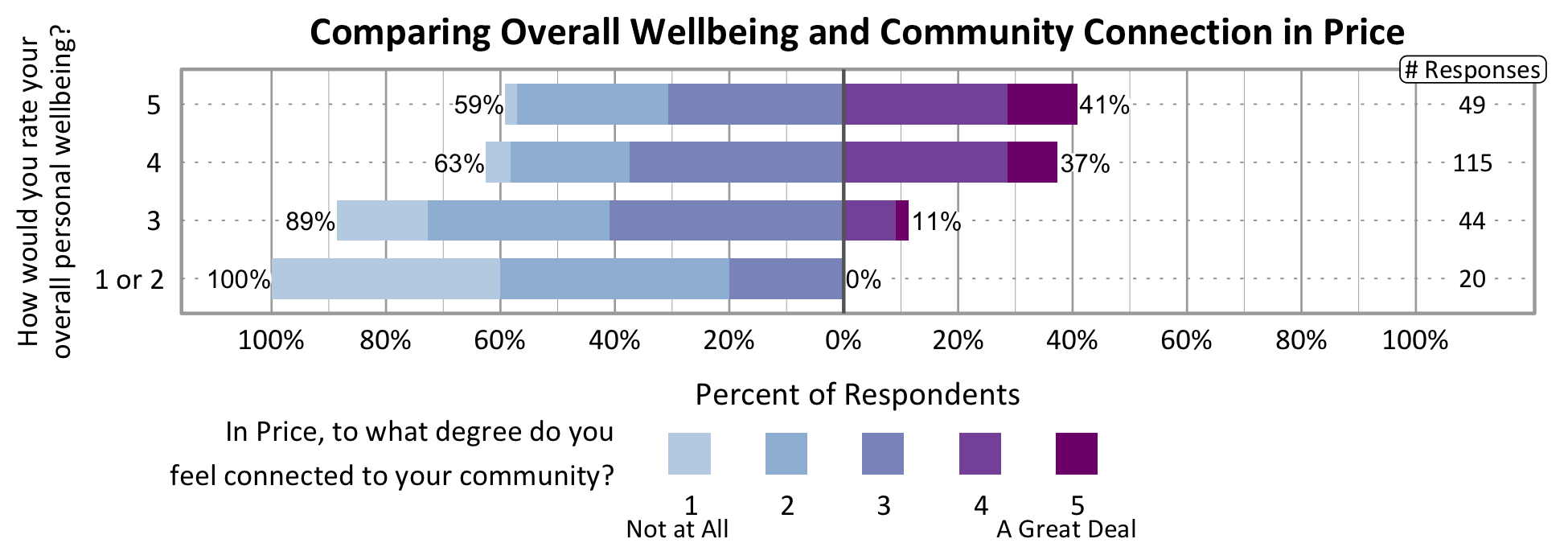
Comparing Community Action and Connection Across Cities
The graphs below show how Wellbeing Project cities compare on the degree to which people take action in response to local problems and opportunities and how connected people feel to their city as a community. Price was in the lower half on perceived community action and community connection based on the number of people indicating a 4 or 5 on a 5-point scale. Margins of error are particularly high for Delta, Helper, Midvale, and Santaquin due to low survey response.
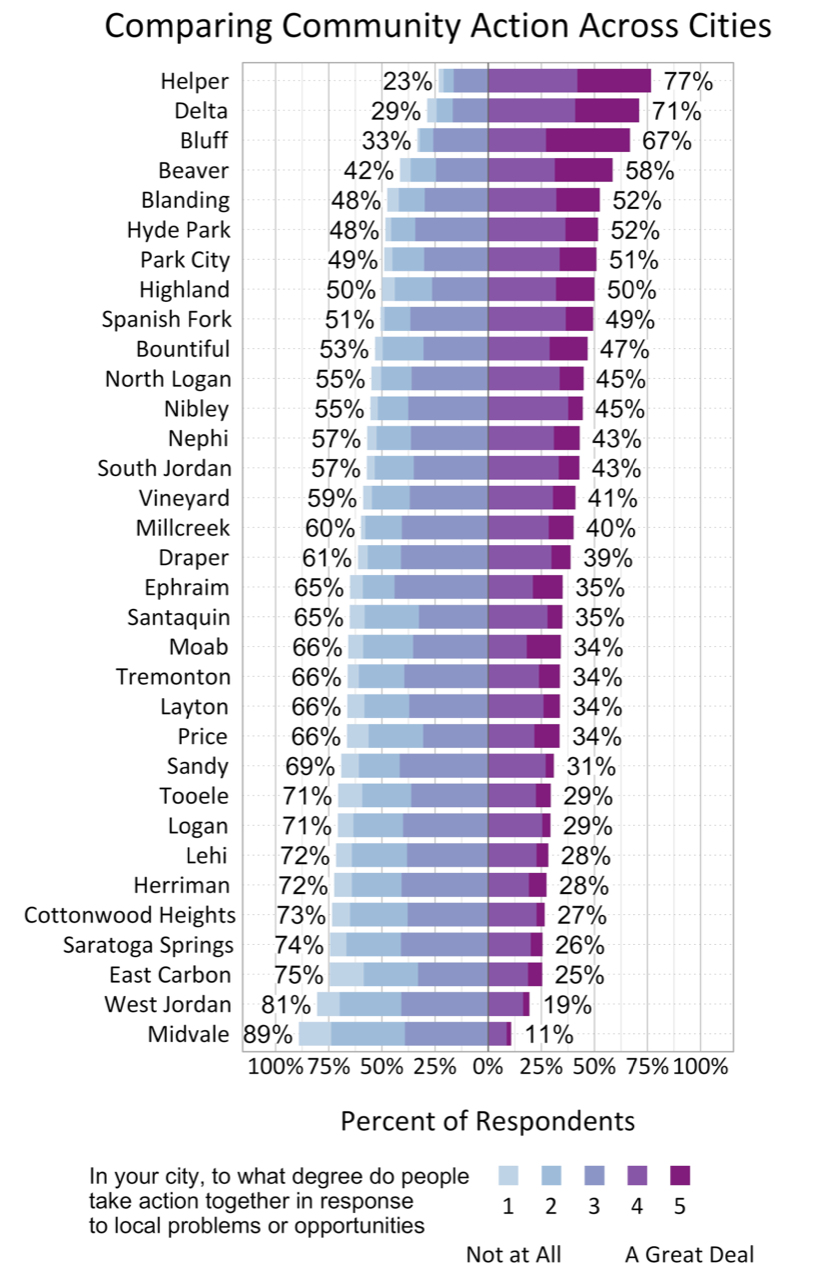
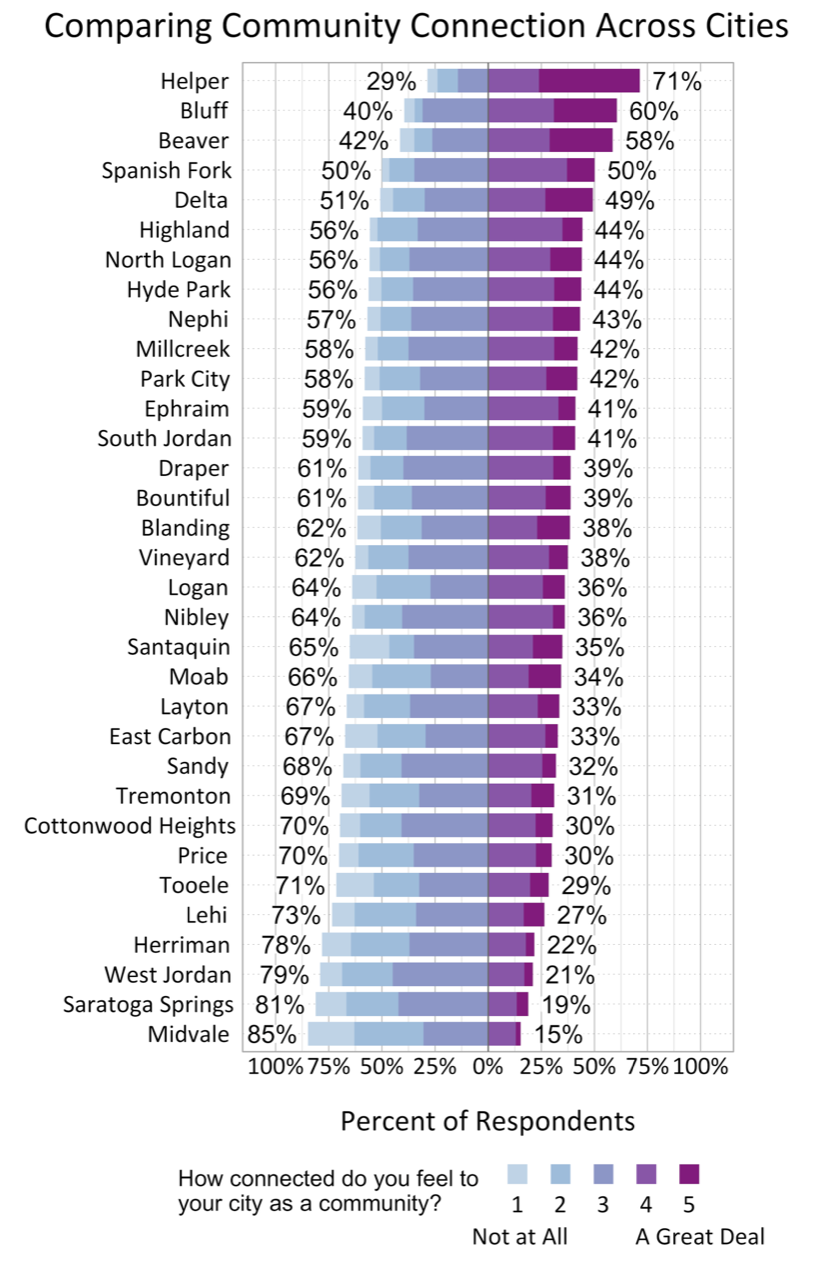
Participation in Recreation and Nature-Related Activities
Respondents were asked to indicate whether or not they participated in eight different recreation or nature-based activities in the past 12 months. Enjoying wildlife and birds in your yard or neighborhood (81%) was the most common activity for respondents, followed by recreating in parks in the city (72%) and non-motorized recreation on public lands or waters (72%).
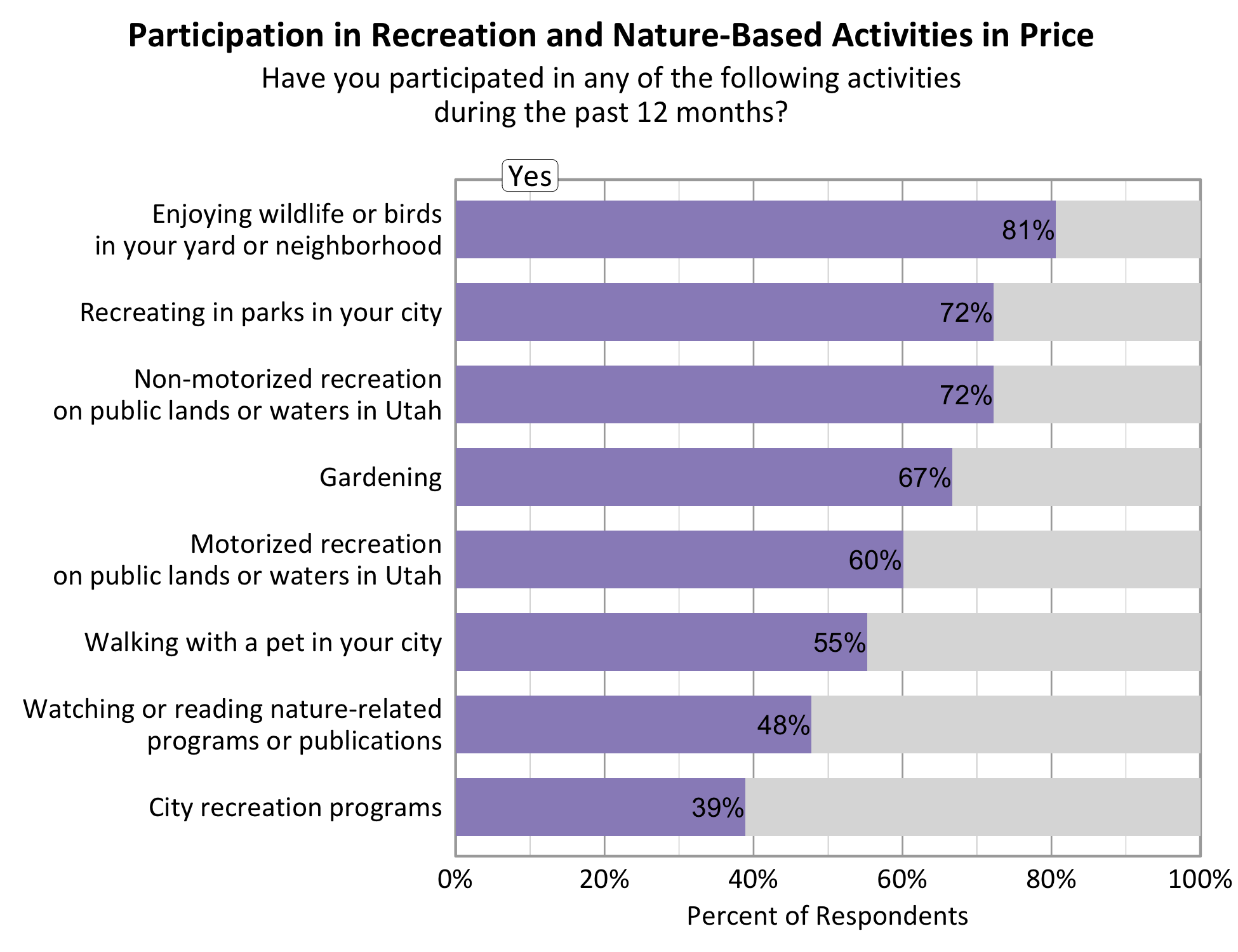
For Price respondents, participating in motorized and non-motorized recreation on Utah public lands or waters, enjoying wildlife and birds in yard or neighborhood, gardening, and watching or reading nature-related programs or publications were positively and significantly related to overall personal wellbeing.
Enjoying wildlife and birds in yard or neighborhood and watching or reading nature-related programs or publications were positively and significantly related to community wellbeing.
Recreating in city parks and gardening were positively and significantly related to community connections.
Influence of Landscape on Wellbeing
Survey participants were asked about the influence of landscape features on their wellbeing. Natural landscapes including mountains, rivers and streams, lakes, and trails were found to have an overwhelmingly positive influence on wellbeing. In terms of development and industry in the landscape, respondents were more divided.
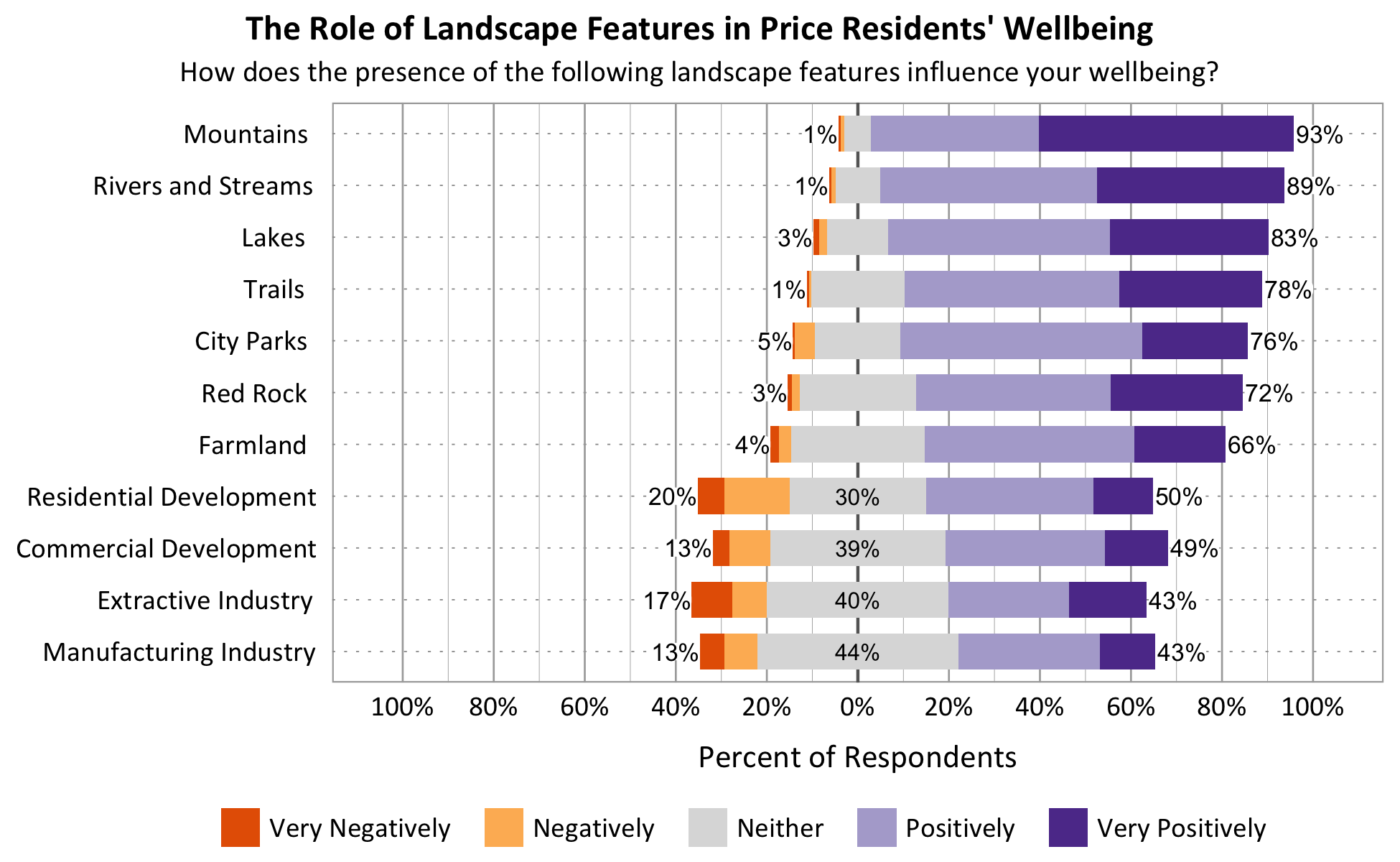
Perspectives on Population Growth and Economic Development
In terms of the rate of population growth, respondents in Price were fairly evenly distributed, with 33% indicating it was just right, 30% too fast, and 24% too slow. On the pace of economic development, the majority of respondents indicated it was too slow (71%).
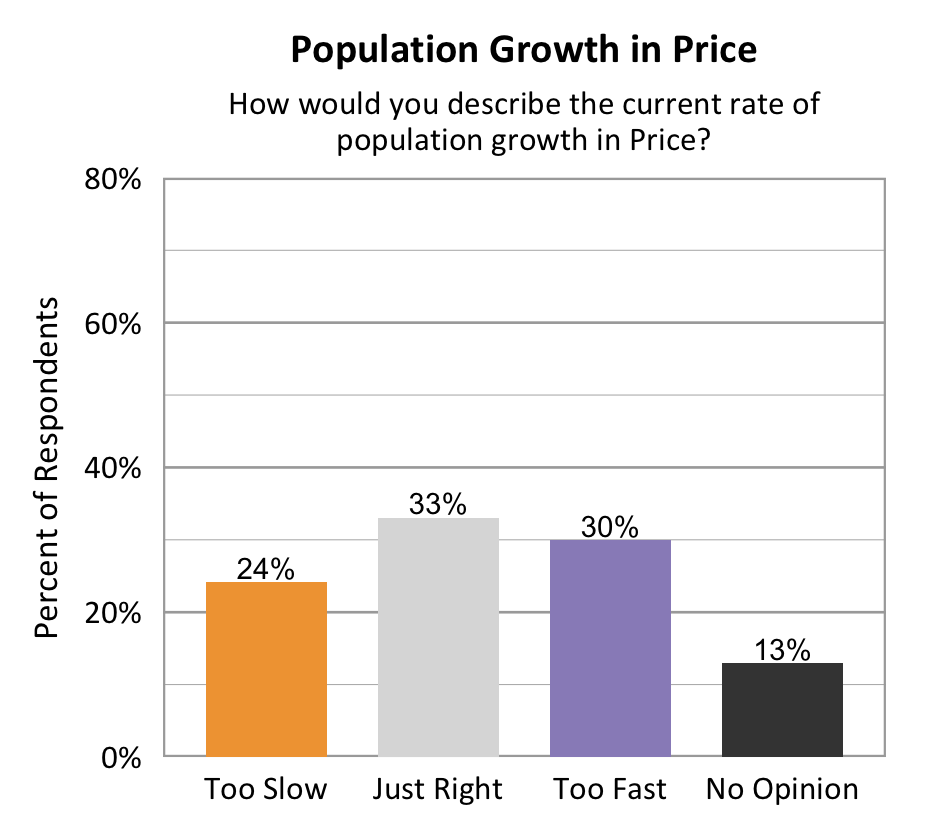
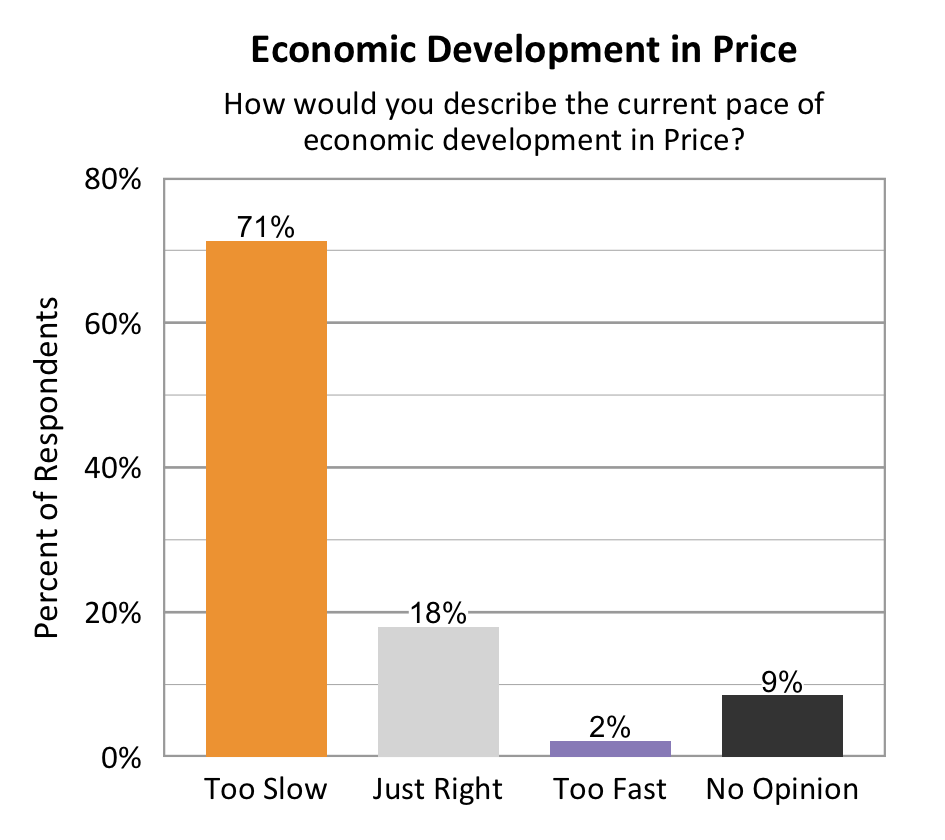
The graphs below show the change in perceptions in the current rate of population growth and pace of economic development from 2021 to 2022. The percentage indicating that population growth is too fast increased from 9% to 30% while the percentages for too slow and just right declined. Perceptions on the pace of economic development stayed about the same, with the majority indicating it's too slow.
The graphs below show how Price compares to other participating cities in the Wellbeing Project on these perceptions of population growth and economic development in 2022. Margins of error are particularly high for Delta, Helper, Midvale, and Santaquin due to low survey response.
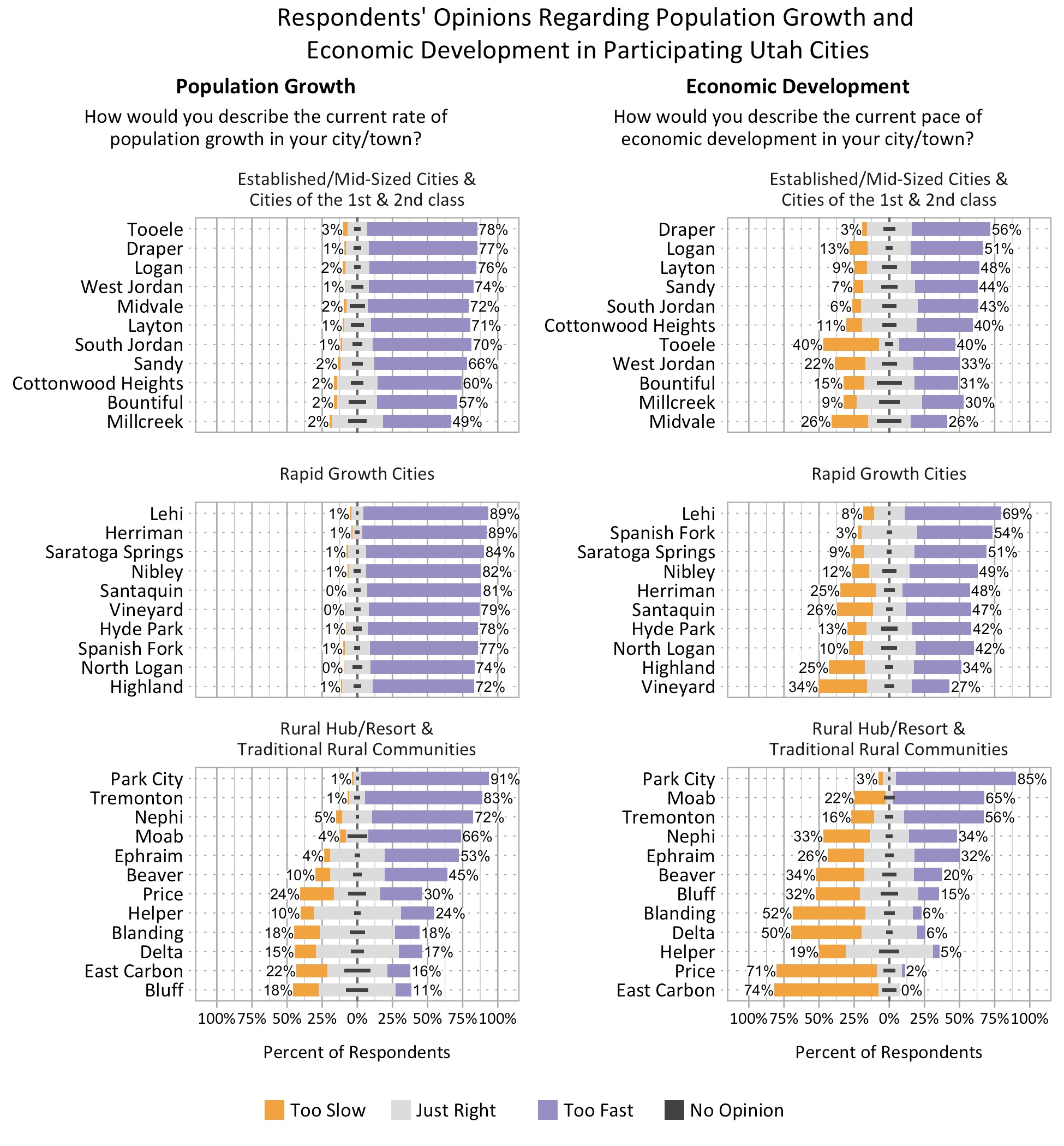
Concerns in Price
Survey respondents indicated the degree to which a number of possible local issues were a concern as they look to the future of Price. Opportunities for Youth, Water Supply, Substance Abuse, and Affordable Housing were the top four concerns with at least 80% of respondents indicating these were moderate or major concerns.
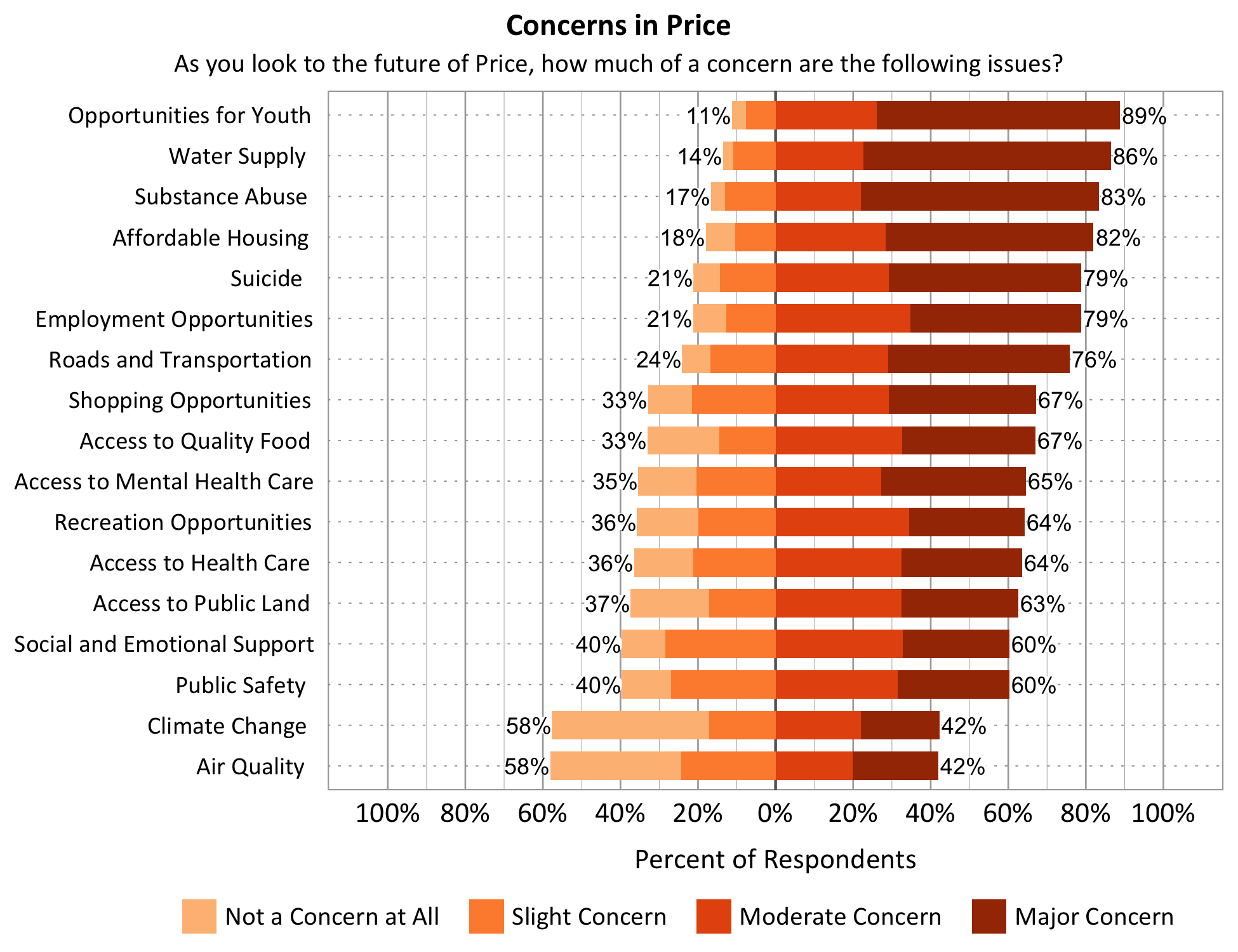
Other concerns were raised by 46 respondents who filled in the “other” category. Responses identical to the categories above are not included in the table.
Table 5
Other Concerns Mentioned |
||
|---|---|---|
| Fix the roads (7) | Politics (2) | City image |
| Government (4) | Bullying | Too much redistribution of wealth |
| Access to cultural events (3) | Water | Education for autistic students |
| Noise (2) | Overreach | Physical activity |
| Infrastructure to support growth (2) | Taxes | Rec center |
| Quality of life (2) | Church lawns | Community involvement |
| Sewer (2) | Wildfire | |
| Public transportation (2) | Fairness | |
Open Comments
Survey respondents were asked to comment on what they value most about Price and to provide any additional comments about wellbeing. Comments have been shared with city leaders. In summary, many residents of Price valued the positive social climate and the smaller, uncrowded, rural feel of the town. Many residents valued the general sense of safety, the peaceful and quiet atmosphere, and the centrally located placement of the city. In addition, many also valued the abundant recreational and nature-related opportunities offered in Price. In the additional comments section, many residents indicated concerns over substance abuse issues, many wanting more access to mental healthcare and opportunities for positive recreation for youth to avoid drug use. Many residents also commented on the poor city image and amenities, wanting yards and main street to be cleaned up and more retail opportunities. Many comments also detailed issues related to unaffordable housing and an overall poor job market, with many stressing that roads and infrastructure need considerable improvements.


